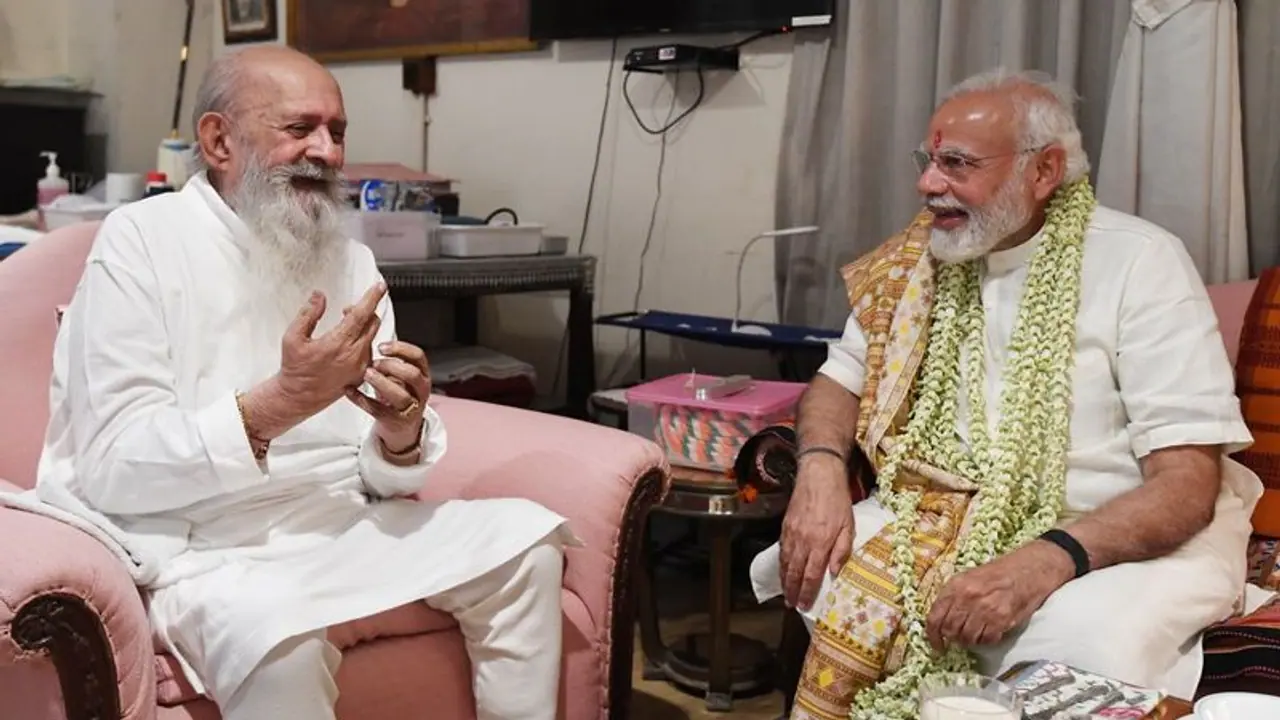Shatrusalyasinhji is a former first-class cricketer and the last Maharaja of Nawanagar to hold the title.
Prime Minister Narendra Modi visited legendary cricketer Jam Saheb Shatrusalyasinhji on Tuesday and enjoyed reminiscing about old times.

The Prime Minister said in a tweet today, "The generosity of Jam Saheb's family has extended around the world, particularly in Europe. I got the opportunity to meet Jam Saheb Shri Shatrusalyasinhji at Jamnagar, who has always been exceedingly loving towards me as an older. We had a terrific time reminiscing about former times."
Shatrusalyasinhji is a former first-class cricketer and the last Maharaja of Nawanagar to hold the title.
In the 1958–59 season, he made his first-class debut for Saurashtra against Bombay, scoring 15 not out and a duck and took the wicket of Arvind Apte.
Shatrusalyasinhji led the Saurashtra Cricket Association for several years until being succeeded in 1972 by Niranjan Shah, who has stayed in charge since and whose son Jaydev Shah has played for Saurashtra for many years.
He formerly housed about 8000 pets in his mansions. In Jamnagar, he maintains a 45-acre walled wildlife sanctuary next to his residence.
He married a member of the Nepalese royal family and ascended to the title of Maharaja Jam Saheb of Nawanagar after his father died in February 1966. When the Twenty-sixth Amendment to the Indian Constitution abolished royal privy purses and entitlements in 1971, he was renamed HH Jam Saheb Sri Shatrusalyasinhji.
Notably, Prime Minister Narendra Modi is in Gujarat for a three-day visit from April 18 to April 20. Earlier today, he dedicated to the country and set the groundwork for a number of development initiatives at the Banas Dairy Sankul in Diyodar, Banaskantha.
Who is Digvijaysinhji Ranjitsinhji Jadeja?
Digvijaysinhji Ranjitsinhji Jadeja was the Maharaja Jam Saheb of Nawanagar from 1933 to 1948, succeeding his uncle, the famed cricketer K.S. Ranjitsinhji. He was educated at Rajkumar College, Rajkot.
During the years preceding World War 2, a huge number of people were taken away to work at the Soviet-run labour camps by the Red Army in remote parts of NE USSR & Siberia.
A year later, some Polish refugees were allowed to leave the Soviet Union.
Thus began a great exodus of the refugees from the cold parts of Siberia to warmer southern regions of Central Asia. The long and arduous journey stretched over hundreds of kilometres. The journey stretched across many lands and transit points and after being refused by many European and Asian countries for shelter, finally, they reached India and came to Bombay.
When the British Governor refused to let them enter, Maharaja Digvijaysinhji Ranjitsinhji Jadeja of Nawanagar, who had heard of the plight of the refugees, sought to help them and pressured the British government to allow the refugees to disembark.
Frustrated by the lack of empathy and the unwillingness of the government to act, the Maharaja ordered the ship to dock at Rosi port in his province. Thus began the story of Little Poland in India. After arriving in Gujarat in 1941, Maharaja arranged for their stay at camps in Balachadi, a village in Jamnagar, where apart from food and shelter, a concerted effort was made to further their education and keep their Polish culture and traditions alive. However, reports suggest the refugees stayed in Jamnagar for nine years, till WW2 lasted and were well-taken care of by Jam Saheb who personally visited the camps.
